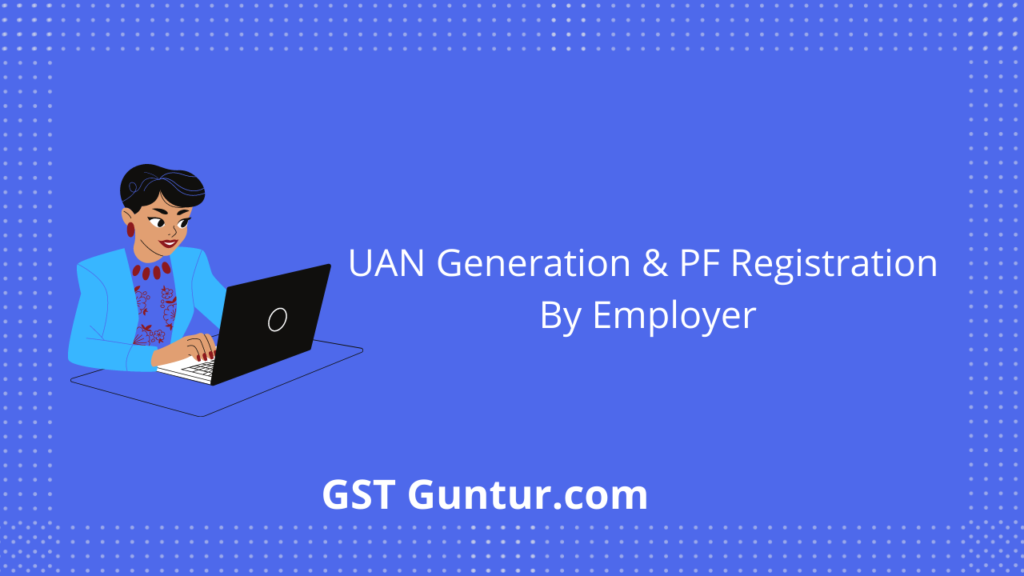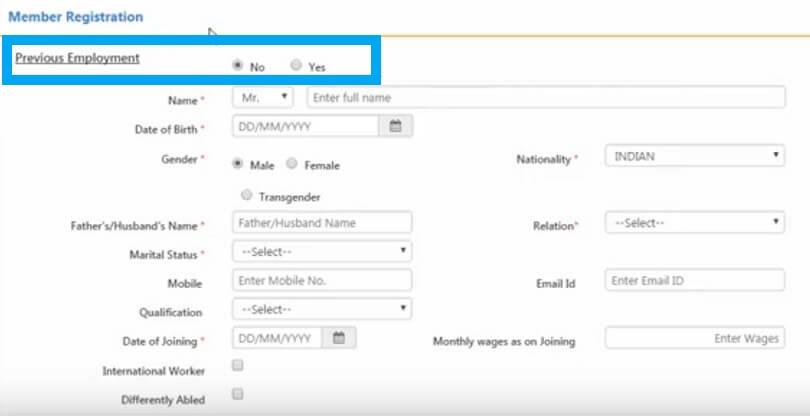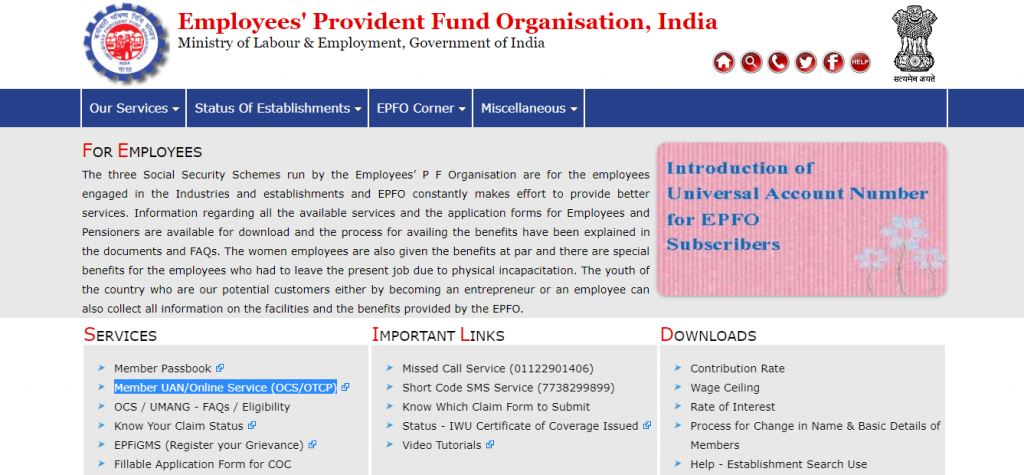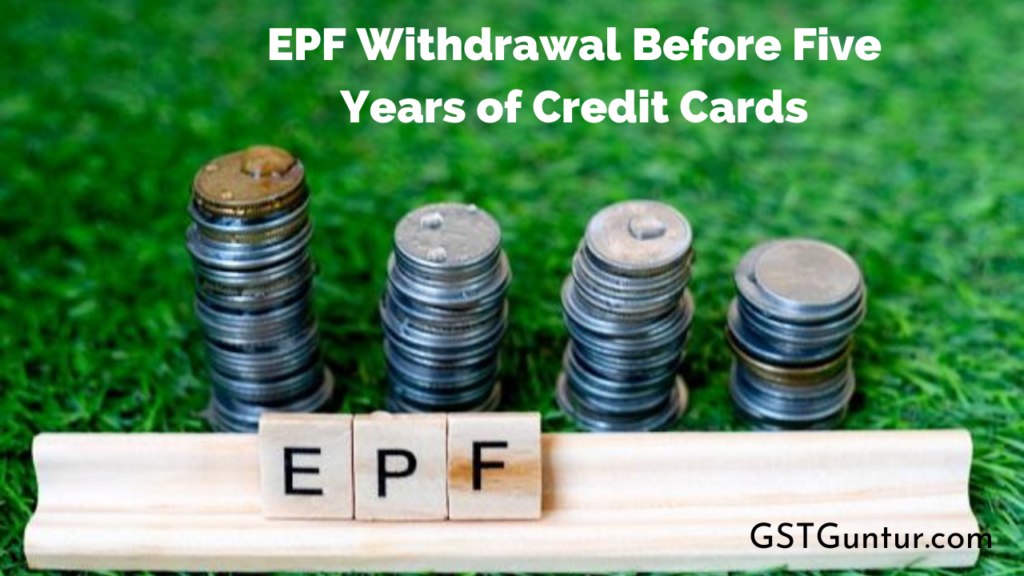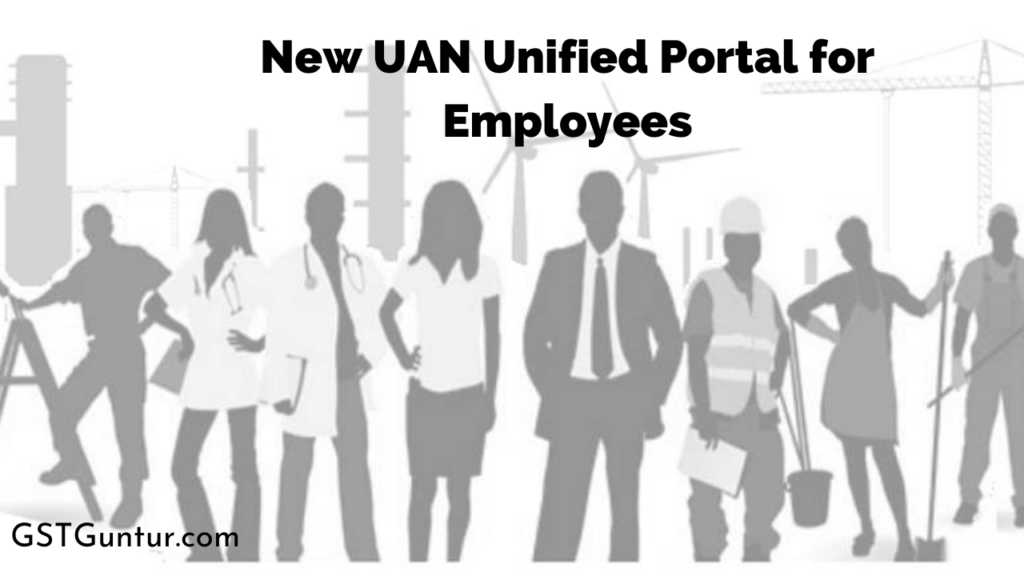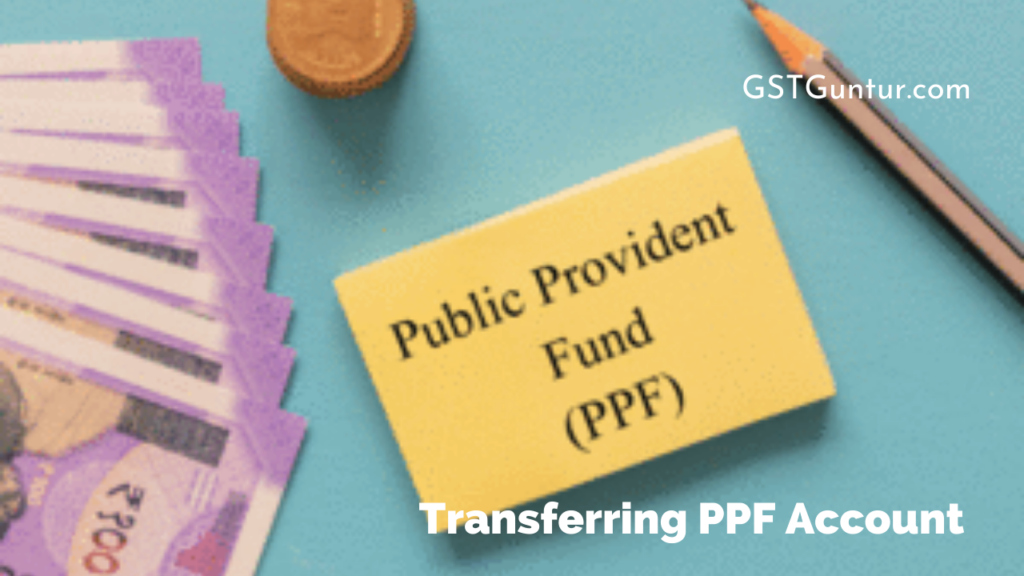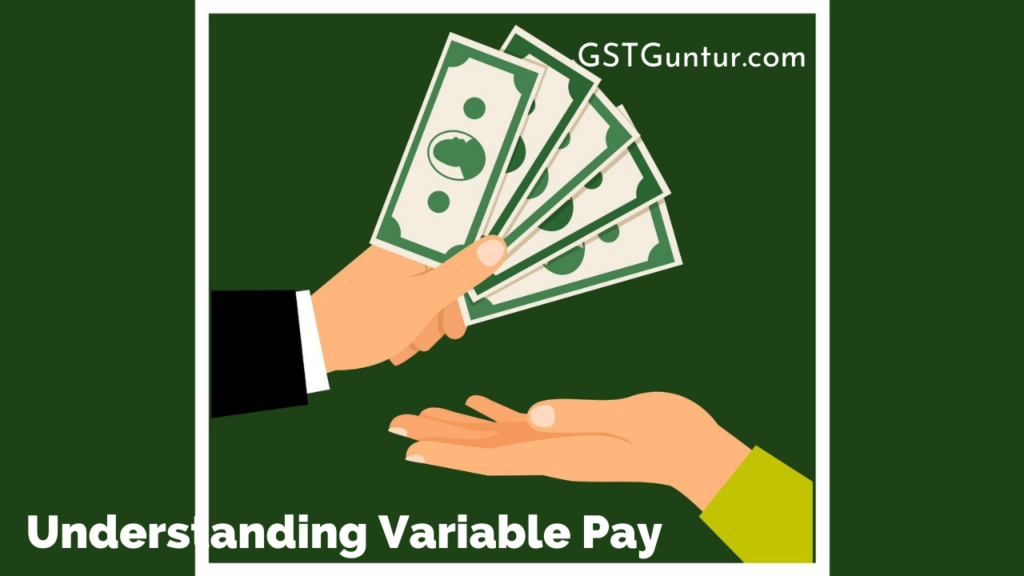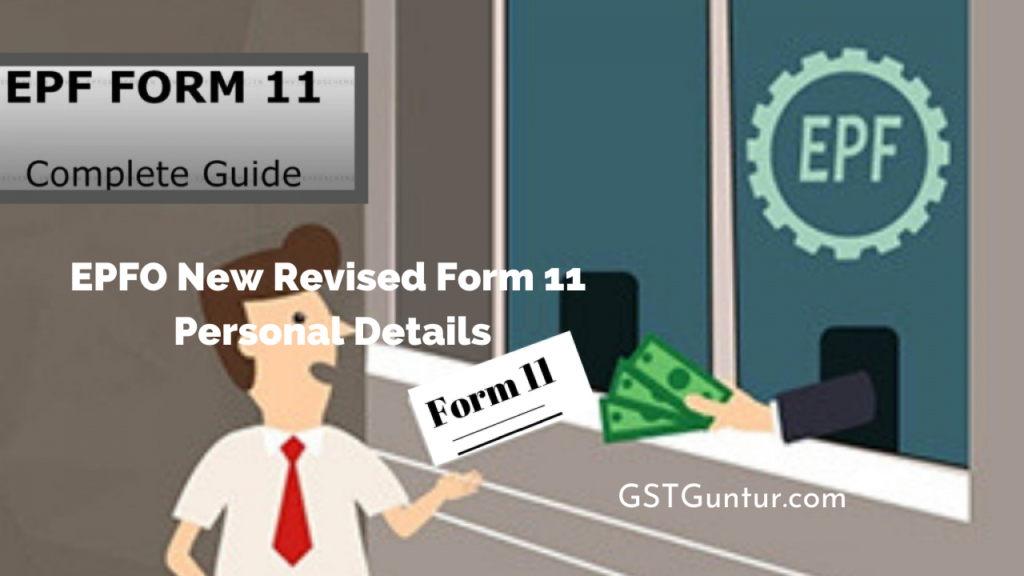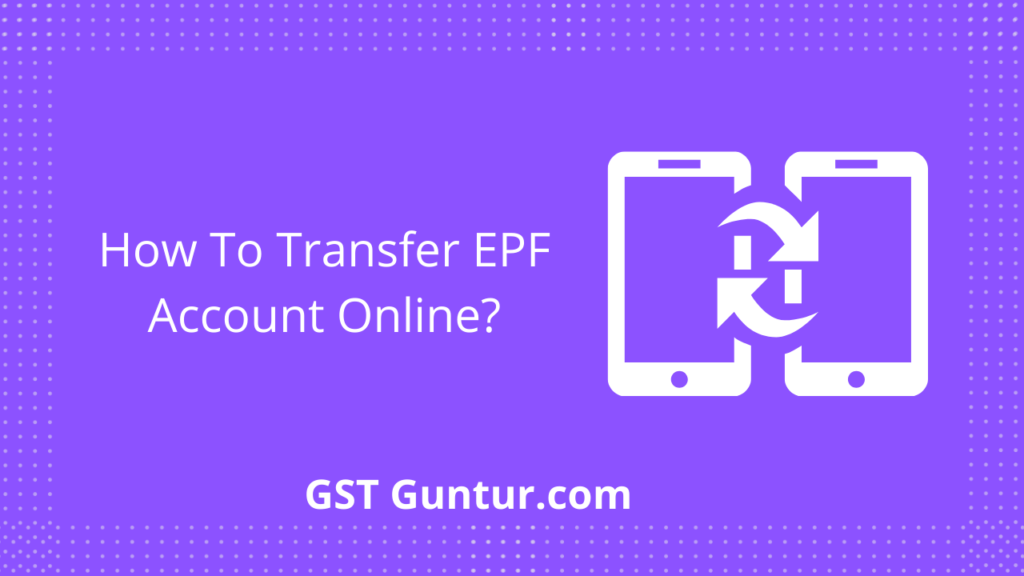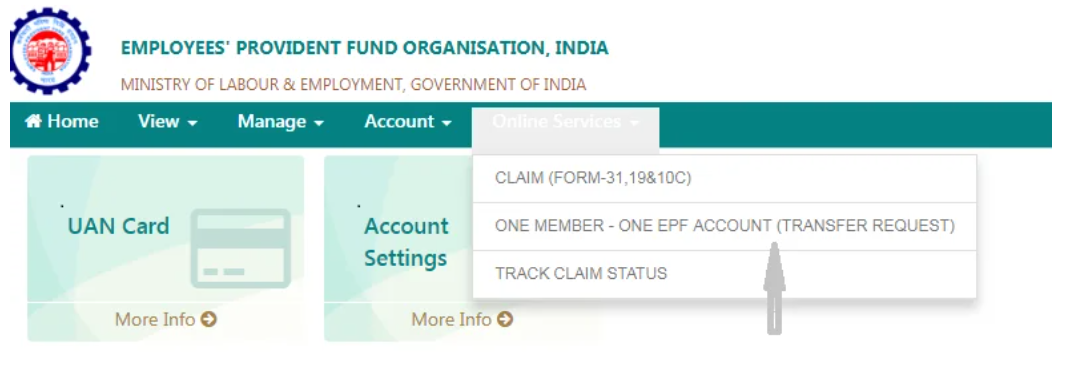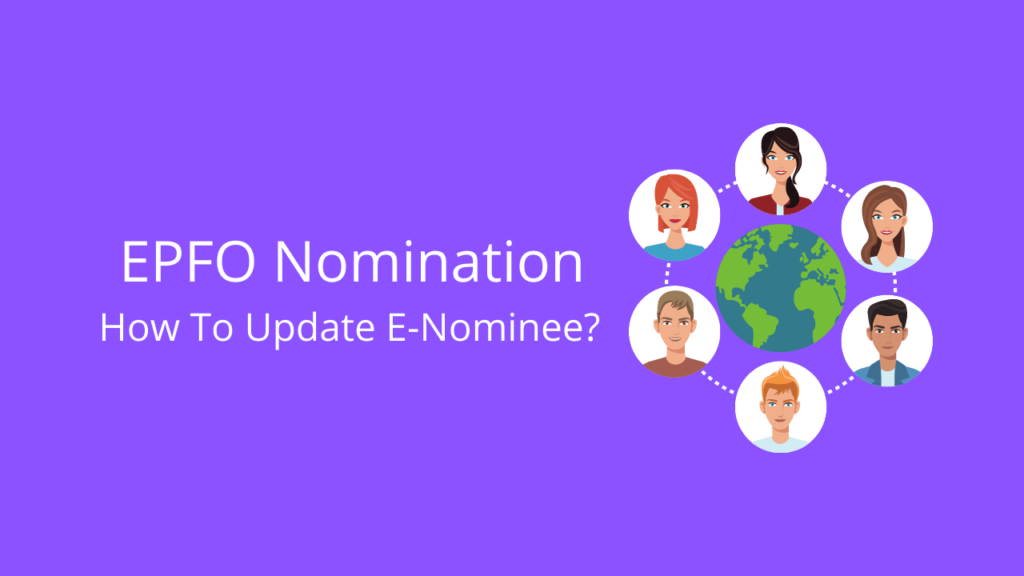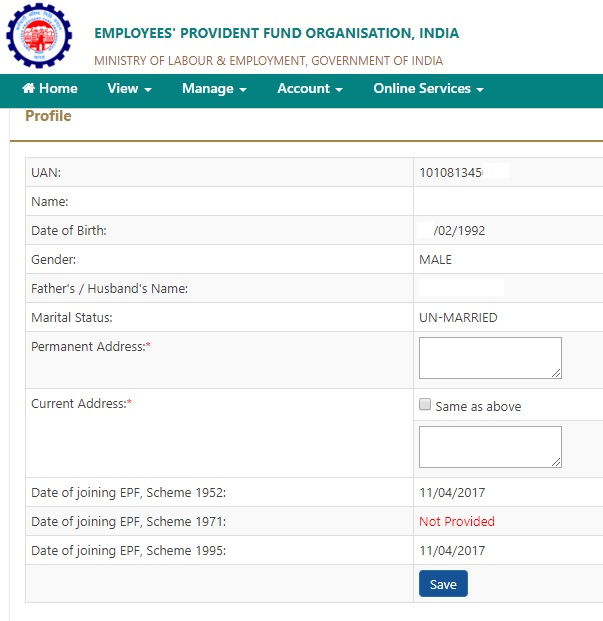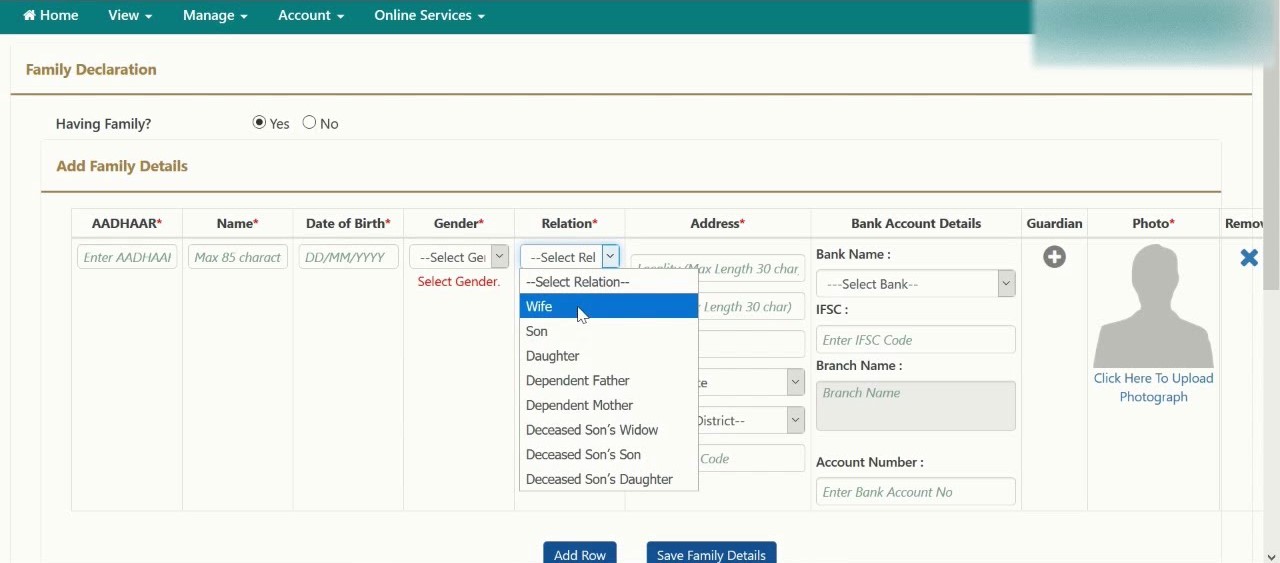EPF Withdrawal Before Five Years: The Government of India will pay the employers and worker contribution to the EPF record of workers for an additional three months from June to August 2020. The advantage is for foundations with up to 100 workers and where 90% of those workers draw a compensation of not as much as Rs. 15,000 every month. The endowment to EPF is diminished to 10% from 12% for non-government associations. The interest rate pertinent to the EPF endowments is 8.5% for FY 2020-21.
Benefaction towards an EPF account gives an advantage to people via an allowance under Section 80 C. It would likewise be great to realize the annual duty or TDS implication of EPF withdrawal. Curiously, EPF withdrawal is taxable under particular conditions and excluded in specific situations.
EPF Withdrawal Before 5 Years
If you withdraw from EPF before finishing five years of continuous service, TDS will be reduced. In evaluating five years of service, your tenure with the prior employer is also incorporated. If you transfer your EPF balance from the previous employer to the current employer and your total employer and your full employment is five years or more, no TDS is reduced. Kindly remember that you must evaluate the same five years; there is no favour if you are short by a few days. An overview of EPF withdrawal before five years is given underneath:
- After leaving your old work and being jobless for a very long time, you can pull out EPF and EPS. Special cases.
- A lady who quit their place of employment for getting married, pregnancy or childbirth won’t need to trust that two months will draw out.
- If you are quitting because of wellbeing reasons.
Who is traveling to another country for business/settlement and doesn’t mean to return soon?
Before five years of finish of administration, Provident fund withdrawal will pull in TDS(tax deducted at source)
successful from Jun 1, 2015.
- TDS on EPF will be taken away if withdrawal is more than Rs 50,000. This is pertinent from June 2016. Earlier, this cutoff was Rs 30,000.
- TDS will be deducted at 10 % gave PAN is submitted. Or else, TDS is at the pace of 34.608 % if PAN isn’t presented.
- You can submit form 15G/15H to stay away from TDS on the off chance that you pull out offline.
You can pull it out on the web or offline.
- You can pull out web-based utilizing UAN part entryway (if KYC is affirmed).
- To withdraw EPF offline through the old firm, If you have UAN, then you need to submit Composite PF Claim Forms (Non-Aadhar based and Aadhar based) which restored forms No. 19, 10C,19 (UAN), 31, 10C (UAN) and 31 (UAN)
- To pull out EPF offline through the old firm, If you don’t have UAN, You need to submit Form 19 and Form 10C.
- To draw out EPF offline without going through the old firm for un exempted associations, you can move toward EPFO straightforwardly. Unexempted associations are those where you are not adding to EPF Private Trust.
You can Track EPF Withdrawal
You will get regular SMS refreshes.
You’ll get two distinct amounts. One is for your EPF withdrawal, and the other is for the Pension contribution.
If, by chance that you draw out your PF balance before the expiry of five years of commitment, at that point, it is available in the year in which you draw out.
- Your manager’s commitments alongside the collected interest sum will be burdened as “benefits in lieu of pay” under the head Salary. However, help under Section 89 will be accessible.
- Interest collected on your (worker) contributions will be burdened under the head “Income from different sources”.
- The tax derivations guaranteed on your contributions to EPF will be renounced or moved back and responsible for the tax.
When Can Someone Make EPF Withdrawal?
The laws or rules are that a worker ought not to be in work for about two months after leaving and if he needs to draw out his Provident Fund sum. In the past, one could draw out EPF from one occupation even in the wake of joining another work as EPFO couldn’t follow if that one worked or had a PF account.
Yet, presently with the UAN number, EPFO can see if you are utilized or not and consequently, EPFO can hypothetically dismiss your application. Recollect that EPF is a drawn-out retirement venture item, and a move of record will assist you with getting the enchantment of compounding.
What Happens If Someone Doesn’t Withdraw From The Epf Account After Quitting The Job?
When you leave the work, you quit adding to the EPF account, and your EPF account gets inactive. EPF accounts were considered broken when there was no contribution for 36 months.
Such records quit acquiring interest from the financial year 2011-12. On Aug 2 2016, Labour Minister Bandaru Dattatreya said in the Rajya Sabha that the public authority has chosen to credit interest to these inoperative accounts, transforming them into active accounts. On Nov 11 2016, notice was given with this effect.
Presently, the account will be viewed as inactive just when the representatives retire at 55 years old or move to another country forever. As indicated by the notice, assuming the record holder dies, his/her account will be considered out of commission.
How are the Five Years Evaluated for EPF withdrawal?
Five years mean five years of benefaction to EPF. Let’s assume you worked in an association for a very long time and afterward left it for higher studies. At that point, you have added to EPF for three years of age.
Simply holding the PF account with the business for a very long time won’t make it five years and will not remove the tax implications. Be that as it may, your EPF would procure interest. So If you plan to take work after some time(say after higher studies end), you can leave your PF account and move it to a new business in the wake of joining.
Are Two Months Waiting Time for EPF Withdrawal Valid In All Cases?
No. In given cases, two months sitting and waiting period for applying for EPF withdrawal is postponed off.
- Those representatives travelling to another country for work/settlement and don’t plan to return soon can Apply for rapid PF withdrawal.
- A lady can Withdraw cash if she is leaving a job for marriage. You need to give evidence of the marriage like a wedding card.
- These are after the retirement or passing of the worker.
How Much Will One Get On Withdrawing from EPF?
You can check your EPF balance differently. If UAN is enrolled, you can Check EPF Balance by following techniques :
- Check EPF Balance by sending SMS: Assuming your UAN is enrolled, from the mobile send SMS EPFOHO UAN ENG to 7738 299 899. You have the choice to determine nine different dialects like HINDI, Gujrati and so on.
- Get EPF Balance by Missed Call: If by chance, you have an applicable UAN, your mobile number also will be enrolled with the EPF division. A missed call to the phone number 011 229 01 406, at no expense, will guarantee that you get an SMS that rundowns down your PF number, age and name according to the EPF record.
- UAN Passbook: Presently Member passbook is accessible at http://www.epfindia.gov.in >> Our Services >> For Employees >> Member Passbook. You can utilize your UAN number and password to download the passbook.
- Check EPF balance with EPF mobile App: Download the Mobile App m-epf from the Google Play store. Likewise, one can see their month-to-month credits through the passbook to see their information accessible with EPFO.
Check EPF Balance
For UAN not enlisted, You can check EPF balance as follows.
- EPF through Member Balance site and get SMS From July 2011, one can check the EPF account balance on the web. Note Often, balance is old and not refreshed.
- Visit http://www.epfindia.com/site_en/
- Tap on Employers Provident Fund Organization Office or EPFO Office.
- Enter your PF Account Number which is in the organization: EPFO Office Code/Establishment Code(Max. 7 Digits) / Account Number (Max 7 digit) (PF Account Number might not have Extension code, all things considered, leave it clear) / Extension(Max 3 digits).
- Enter your Mobile Number and Name, Accept Terms and condition and Submit.
- You will get an SMS alert from EPFO: EE sum: Rs XXXXX and ER sum Rs: XXXXX as on < Today’s Date>(Account refreshed up to Date).
You would get the manager’s commitment, employee contribution and premium procured on it. To revive Normally, both the business and worker contribute 12% of every one of the essential compensation of the representative and DA (assuming any) to EPF. (Representative can offer more towards EPF voluntarily, which is called VPF)
- The whole 12% of representatives’ commitment is added towards PF.
- 8.33% out of the all-out 12% of the businesses contribution is redirected to the EPS or benefits conspire, and the equilibrium of 3.67% is invested into PF. Nonetheless, if the total compensation of a worker surpasses Rs. 6,500 every month, the contribution towards pension programs is limited to 8.33% of Rs. 6,500 (for example Rs. 541 every month) or 8.33% of 15,000 ie 1250 pm after Oct 2014. The equilibrium of business commitment goes into EPF. EPFO has now raised the qualification roof for EPS to Rs 15,000 every month.
- The business contribution is absolved from duty, and the representative’s commitment is available yet qualified for derivation under area 80C of the Income charge Act.
What Are The Steps To Withdraw From EPF online?
On May 1, 2017, EPFO declared that all EPF Member’s who have initiated their UAN and added their KYC (Aadhaar) with EPFO would want to put in an application for PF Final Settlement (Form19), Pension Withdrawal Advantage (Form10-C) and PF Part Withdrawal (Form31) from the UAN Interface straightforwardly. If you meet these prerequisites, you can draw them out through online mode.
Step 1: Go to the UAN entrance via looking through https://unifiedportal-mem.epfindia.gov.in/memberinterface/.
Step 2: Sign in with your UAN and passcode and enter the captcha.
Step 3: Then, click on the tab ‘Oversee’ and select KYC to check whether your KYC information, for example, Aadhaar, PAN and the bank information, are correct and confirmed or not.
Step 4: After the KYC information is confirmed, go to the tab ‘Online Services’ and select the alternative ‘Guarantee (Form-31, 19 and 10C)’ starting from the drop menu.
Step 5: The ‘Guarantee’ screen will show the part information, KYC information and other service information. Enter the ending four digits of your bank account and tap on ‘Check’.
Step 6: Tap on ‘Yes’ to sign the declaration of the endeavor and afterward continue.
Step 7: Now, click on ‘Continue for Online case’.
Step 8: In the claim form, choose the claim you need, for example, full EPF settlement, EPF part withdrawal (advance/advance), or annuity withdrawal, under the tab ‘I Want To Apply For’. Provided that the member isn’t qualified for any of the services like PF withdrawal or annuity withdrawal, because of the service criteria, at that point, that choice won’t appear in the drop-down menu.
Step 9: Then, choose ‘PF Advance (Form 31)’ to draw out your fund. Further, give the cause behind such advance, the total amount required and the worker’s location.
Step 10: Click on the certificate and present your application. You might be approached to submit filtered documents for the reason you have filled the form. The firm should favour the withdrawal request, and only then you will get money in your bank account. It usually requires 15-20 days to get the cash credited to the bank account.
What are the Steps for Withdrawing EPF offline?
- To draw out the PF balance, an individual should fill the form 19. It is accessible in the provincial office or from the EPF site.
- At that point, fill the predefined fields with the essential data in the application.
- What’s more, confirm the signature of any gazette official or postmaster or notary official public or magistrate official.
- Alongside the application, one should authenticate the letter for a reason to draw out the PF balance.
- Afterward, present the withdrawal application to the regional office in the workplace.
- When you apply, you’ll get the amount within three months from the submission of the application.
- You will get everything deducted from your account month to month with a high interest of concerning 8.75% each year.
How To Withdraw If Someone Doesn’t Have UAN?
You need to submit Form 19, directions to fill form 19 from the EPFO site.
- The employer will verify the form and send it to the regional PF office.
- The regional PF office requires around one month to process your application.
- EPFO deposits PF amount straightforwardly to the worker’s bank account.
You can follow and track your application status through http://www.epfindia.com/site_en/KYCS.php.Know you can likewise give an SMS number in the application form and get updates.
What is Form 15H or 15G? Why Does Someone Need To Fill It?
Form No. 15G or 15H are self-affirmation forms people can outfit to express that their pay is below the taxable limit, and thus, no TDS ought to be subtracted.
- Provident fund withdrawal is prior to five years of the fulfillment of service pulls in tax deducted at source (TDS) at 10% from Jun 1, 2015.
- TDS will be deducted at 34% provided that one doesn’t submit PAN.
- Exclusion from TDS has been given to subscribers with no taxable income if they submit a 15G/15H form. To stay away from the levy of TDS, 15H (for senior residents), or Form No. 15G (other than senior residents) can be submitted, given the provident fund amount payable is up to the fundamental exclusion limit, which for AY 2016-17 is 2,50,000 and Rs 3,00,000 for senior residents separately.
What Are The Steps To Apply for Home Loan Based on EPF Accumulation?
You can follow the method offered beneath to apply for a home loan depends on your EPF account balance:
Step 1: Put in an application for a home loan through the housing society to the EPF Commissioner in the organization indicated in Annexure 1.
Step 2: The Commissioner will give a testament that expresses the month-to-month contribution to your EPF account in the track of the most recent three months. Then again, you can take a printed duplicate of your EPF passbook to show the most recent three months commitment.
Step 3: You can choose a single amount payout or installments.
Step 4: EPFO makes the payment to the housing society straightforwardly.
Can My Employer Reject Withdrawing My EPF Application?
An employer can’t deny signing your EPF withdrawal form, and he ought not, because PF is your money and nobody has any privilege on it. If he doesn’t coordinate, you can present the application to the Regional EPFO office. You need to validate your application form by any of these specialists: Manager of a bank or any gazetted official or Member of the Central Board of Trustees./council/Regional Committee (Employees’ Provident Fund Organization) or Magistrate/Post/Sub Post Master/President of Village Panchayat/Notary Public. Note that you need to take a sign and stamp on each page of the application. Attach service evidence like duplicates of payslip, ID card, Form 16 or appointment letter from business to prove. Additionally, attach a copy of your identity verification just as Address evidence.
Since this is a sidestep course, EPFO doesn’t encourage this procedure. Likewise, there is more possibility of fraud also. Consequently, It requests a letter that should express the explanation of direct application for EPF withdrawal.
How Does Someone Know About The Status Of Their Withdrawal Application?
A request must be raised through The Employees’ Provident Fund Organization (EPFO) to draw out your PF account. The EPFO is a legal body under the Ministry of Labor and Employment. After setting a request for PF withdrawal, you may not have an idea about the situation with your request.
The EPFO has dispatched an online interaction to see the situation with your demand to address this issue. Here is the technique to check the status of your EPF withdrawal guarantee.
Step 1: Go to the EPFO entrance. Tap on ‘Our Services’ trailed by the ‘For Employees’ option.
Step 2: Click on ‘Know Your Claim Status.
Step 3: Enter your UAN and enter the captcha image.
Step 4: Enter the accompanying information.
- Enter the condition of your PF office
- Select your PF Office starting from the drop menu
- Enter your foundation code
- Enter your Provident Fund account number
Step 5: Click on the ‘Submit’ button to check the situation with your PF guarantee.
How Long Does It Take for EPF Withdrawal?
EPFO usually handles EPF withdrawal within twenty days. However, EPFO is planning to bring it down to few hours.
Other Possibilities to EPF Withdrawal – Transfer of EPF
How to Transfer EPF?
In a perfect world, you should start the way toward transferring your EPF balance when you join your new association and are allotted another PF account number. At present, all the online EPF Transfer claims are through http://epfindia.com/Employee_OTCP.html.
If you need cash, you can somewhat pull out from your EPF account while in service.
You can draw out from your EPF account upon crisis subject to a few conditions and situations generally in the wake of serving, in any event, five years of contribution. Before it was, one of the famous techniques appeared in Hindi movies like Ferrari Ki Sawwari.
- Education or marriage: Withdrawal considers the reason behind the self, a siblings or children’s marriage or for self/kids’ schooling. You need to finish in any event seven years of service to be qualified for this. Significant confirmations are needed. You need to present Form 31 to your boss. Withdrawal sum is up to 50 percent of the corpus gathered to Date.
- Medical therapy: Withdrawal is taken into consideration medical treatment of self, spouse, kids, or guardians. For this, no limitations are forced on long periods of service. You can pull out up to your month-to-month compensation multiple times or the complete corpus collected to Date, whichever is lesser. Necessary confirmations are to be submitted alongside Form 31. No limitation is there on the number of withdrawals.
- Acquisition of plot: The plot should be enrolled in your name, mate’s name or together. You can pull out up to multiple times month-to-month payment. Notwithstanding, withdrawal here is permitted just a single time.
- Development/acquisition of level or house: You need to have finished five years of service in any event. Withdrawal is permitted up to multiple times your month-to-month payments.
- Reimbursement of home loan: You need to have at least ten years of work.
- Redesign of the house: You need to have finished at least five years of service. You can pull out up to multiple times month-to-month payments.
- Pre-retirement: Minimum age is 54 years. You can pull out just a single time and up to 90 percent of the corpus amassed.
EPF and Tax Withdrawal
Is there any TDS on EPF withdrawal?
TDS is relevant when:
- Before five years of service fulfillment, Provident fund withdrawal will draw in tax deducted at source (TDS) at 10% from Jun 1, 2015.
- TDS will be deducted at 34% if one doesn’t submit PAN.
- Exclusion from TDS has been given to supporters with no taxable pay if they submit a 15G/15H form. To keep away from the duty of TDS, 15H (for senior residents) or Form No. 15G (other than senior residents) can be submitted, given the provident fund sum payable is up to the fundamental exclusion limit, which for AY 2016-17 is 2,50,000 and Rs 3,00,000 for senior residents individually. Form No. 15G or 15H are self-revelation forms that people can furnish to express that their pay is underneath the taxable limit.
TDS isn’t relevant:
- If the withdrawal is subsequent to five years or a more significant amount of service, no TDS would be relevant.
- TDS will not be deducted in the event of the move of provident fund starting with one account then onto the next.
- TDS won’t be relevant if there should arise an occurrence of an end of service because of ill health of the employee, contraction/discontinuation of business by manager or other reason outside the ability to control of the member,
- For figuring the time of ceaseless help, a past business can likewise be incorporated if the amassed balance while at one-time boss is moved to the provident fund of the new boss.
- Suppose the service period is under five years. If the amassed provident fund balance is not as much as Rs 50,000, TDS would not be relevant.
TDS or No TDS sum EPF withdrawal before five years is taxable.
What are Taxes on EPF withdrawal Before Service of 5 years?
On the off chance that TDS is deducted and income is less than the fundamental exclusion limit, then one can guarantee TDS while filing the ITR form and request reimbursement.
Example of Tax on EPF Withdrawal Before Five Years
Let’s assume that Rohit joined an organization in Dec 2013 and resigned on Jun 30, 2015. His employee and worker contribution as per the UAN passbook is given underneath.
- For AY 2014-15 (FY 2013-14) Worker’s Share 17,920 Employer Share in EPF 15,756
- Interest procured on Worker’s Share 147 Company’s Share 123
- For AY 2015-16 (FY 2014-15), Workers Share 72,576 Employer Share in EPF 61,830
- Interest acquired on Worker’s Share 4,413 Company’s Share 3,884
- For AY 2016-17 (FY 2015-16) Worker’s Share 18,816 Employer Share in EPF 15,066
- So he needs to add Worker’s Share in EPF 15,756 for AY 2014-15, AY 2015-16 and also AY 2016-17 109,312(17,920 + 72,576 +18,816 ) . Interest on worker’s offer 123+3884. He can lessen tax outgo on the employer offer and interest utilizing section 89.
- Interest gathered on representative’s commitment will be burdened as Income from Other sources: 147 + 4,413
- Assuming he has asserted 17,920 as the allowance under 80C, he needs to switch that. By utilizing the 17920 as 80C taxable pay would have decreased his tax consequently. So the tax he saved will presently appear. This inversion must be taken inconsistently. For instance, his pay in AY 2015-16 was 8.25 lakh, and he had guaranteed 80C derivation of 1 lakh, which included 72,576. Except if it has created different speculations where he can secure 72,576, he would not need to ascertain the tax without the deduction.
- So on 8.5 lakh because of 1 lakh tax derivation, his tax obligation was Rs 77,250. Presently without 72,576 his 80C derivation is diminished to 27,424(1,00,000 – 72,576) so his tax accountability became 89,515 that is increment of 16,939. He needs to pay tax on this income.
What is Relief Present Under Section 89?
When income or other pay arrears are collected in a specific year, one’s a tax liability for that year increments, just because one’s total revenue for that year has expanded. Yet, paying a higher tax by arrears is unreasonable to the citizen.
Our Income charge law has contemplated something very similar and permits an expense allowance under Section 89(1) for this extra taxation rate on the citizen. It includes learning the two tax measures; the first is the measure of tax relevant to the total income, remembering the additional amount for the time of receipt.
The second is computing the tax calculation by adding the arrears to the all-out pay of the years to which they relate. The distinction between the two amounts is the derivation permitted.
Say you acquire Rs.10 lakh a year in the financial year (FY) 2014 and get a balance of Rs.4 lakh for FY13. Your all-out compensation in FY13 was Rs.8 lakh.
For FY14, without the arrears, your expense obligation will be Rs 1.34 lakh, and with arrears (absolute salary of Rs.14 lakh), it will become Rs.2.57 lakh. This is a distinction of Rs.1.23 lakh.
Presently, we need to ascertain the tax occurrence for FY13 on your income of Rs. 8 lakh. Without the balance, you paid a tax of Rs.92,700, and with the arrears (total compensation of Rs.12 lakh), you would have paid Rs.1.95 lakh as the tax. This is a distinction of Rs.1.03 lakh. Along these lines, the relief that you can get under section 89 is Rs. 20,600 (Rs. 1.23 lakhs – Rs. 1.03 lakhs).
You should fill Form10E with this information and submit it to your present boss to guarantee relief. Keep your income slips handy to give as evidence of receipt of the arrears. In any case, do remember that just if the tax paid is higher can you guarantee this relief. Provided that you don’t need to pay overabundance tax because of the arrears, at that point, you don’t get the relief.
Summary About EPF Withdrawal Before Five Years
- A representative ought not to be at work for a very long time after leaving if he needs to pull out his Provident Fund sum.
- Before five years of the fulfillment of service, Provident fund withdrawal will draw in tax deducted at source (TDS) at 10% from Jun 1, 2015.
- TDS will be removed at 34% if one doesn’t submit PAN.
- Exclusion from TDS has been given to subscribers with no available pay if they offer a 15G/15H form.
- No TDS or TDS amount EPF withdrawal before five years is taxable
- If by chance, you pull out your PF balance before the expiry of five years of contribution, at that point, it is taxable in the year in which you withdrew.
FAQ’s on EPF Withdrawal Before Five Years
Question 1.
Can I increment my EPF contributions?
Answer:
Yes, you can increment your EPF contributions and contribute up to 100 percent of your basic salary. That is known as VPF.
Question 2.
Are EPF contributions eligible for tax deductions?
Answer:
Yes, EPF contributions are eligible for tax deductions under Section 80C of the Income Tax Act, 1961.
Question 3.
Can I make premature Withdrawals on my EPF?
Answer:
Yes, you are permitted to make premature withdrawals on meeting specific conditions, and you need to give documentary evidence for this withdrawal.
Question 4.
Do I need the employer’s permission to withdraw my EPF?
Answer:
The new arrangements have meant that the employer’s permission is not required to make the EPF withdrawals.
Question 5.
Will the employer also contribute higher when I do?
Answer:
No, the employer’s contribution will remain the bare minimum whether you opt for VPF or not.

